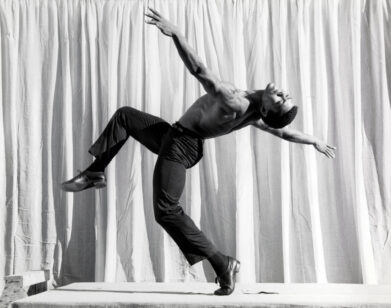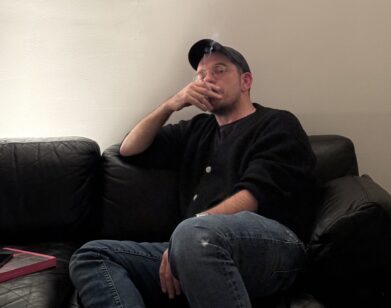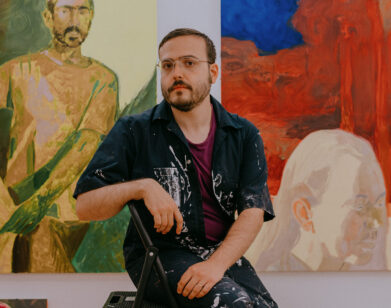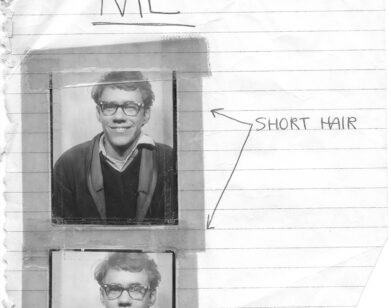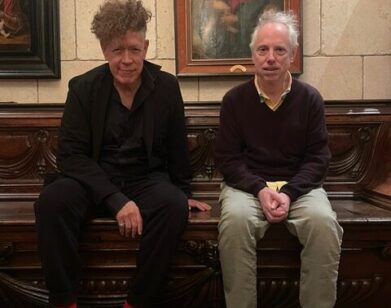Outside the (White) Box: Alex Rose
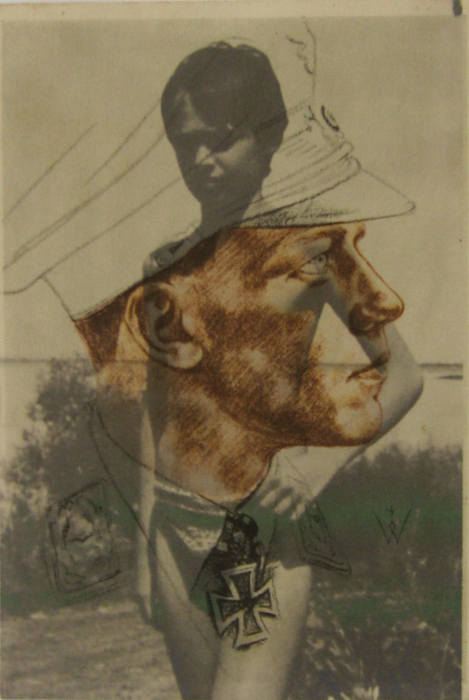
IMAGES COURTESY OF THE ARTIST AND ENVOY ENTERPRISES
If you go to the opening of Alex Rose’s second solo exhibition at Lower East Side gallery Envoy Enterprises tonight, you won’t find the artist there. He is what some people might call a recluse, and what art people might call an “outsider artist,” in the same way that Henry Darger, the Chicago custodian, and Martín Ramírez, the Mexican laborer who spent the last 32 years of his life as an inmate of California mental hospitals, were considered great outsider artists up until they were simply great artists.
While Alex Rose lives a quiet, antisocial life in the city of Cork, Ireland, and refuses interviews, the 40-year-old Irish artist doesn’t make his art in a void. In fact, his destroyed-to-be-resurrected collages, photographs, notebooks, and objects feel like the most vital, urgent stuff out there—it could be the voice of damaged youths in New York or Berlin. Jimi Dams, and artist and the founder of Envoy, first encountered Rose in 2003 on the Internet. At the time, Rose maintained a blog called Porcelain Skull, where he posted images of his collages and notebooks online. After that came the five-year courtship in which artist learned, painstakingly, to trust the gallerist. “We have little things in our past in common,” Dams says carefully. “Our relationship is personal.” There came, as in every personal relationship, a hurdle when it was revealed to Rose through a mutual acquaintance that Dams was an art dealer. (Which seems like a case of, There was never the right moment.) “I told him I was not warming him up to show in the gallery,” says Dams. “My interest was sincere.” They managed to move on and rebuilt their trust to the point where, cautiously, Dams could begin to ask about a show.
“Alex could not comprehend that people like seeing his work,” says the gallerist. “I explained, ‘You’re able to express yourself creatively, but other people who are not capable of that get comfort and release from your work because they are capable of seeing it.’ That he understood.” Still, there was the matter of Rose’s everything-ravaged, everything-burned art-making—which is not so much beautiful decay as beautiful, terrifying, and swift destruction. The artist works from deep within himself, digging into the emotional wounds of a lost childhood—Dams would only reveal that, “Alex never had a chance to be a child”—that his collages and notebooks made up of feverish, scribbled poetry and torn pieces of books and magazines reworked and reworked so that when you see each loose end you are sure each has the voice to tell at least one painful tale on its own. In unison, the chorus can get too loud, and Rose is impelled to destroy his works in the most mortal manner—by burning them. This is how he lets go. (He even eradicates his blogs when he is ready to lay them to rest; the longest, Porcelain Skull, was online for two years; the shortest, two weeks.) And then, perversely, sacrificially, Rose takes the burnt, charred bits and re-appropriates them for the next piece—which he will burn again. Each work is an Icaran tale.
The art’s mortal cycle gives its artist what he requires most essentially: a constant, re-lived childhood that keeps his art looking young, but with an old soul. (At first sight of the work, I had Rose pegged as a 19-year-old art school prodigy.) But old souls don’t travel well, and they don’t travel to New York for gallery exhibitions. So, in 2005, Dams came up with a trial experiment. “I told him, ‘Why don’t you take a box and set it in the corner of your room,’” he says. “So you don’t interfere with the process. You either burn it or bury it; or, as the other option, you lay things to rest in the box and when it is kind of full you send it to me and we can show it to people.” Rose refused. But then, a month or two later, a box arrived in New York at the gallery. “I opened it up and it was Alex’s work,” recalls Dams. “I said, ‘Oh my god.’ I called him and said, ‘You sent me a box.’ He said, ‘Yeah, I tried it. It kind of works.'” In 2008, Envoy hosted Alex Rose’s first solo show in New York. Of course, the artist did not want to come to the opening. But Dams needed Rose to help hang the show. “I was too close to the work,” Dams admits. Rose agreed on one condition: find him a place within five meters of the gallery. Dams put him up at the artist Arleen Schloss’s loft just around the corner, and Rose went from the loft to the gallery and back to the loft, never venturing outside of this circle of trust on his first (and only) trip to New York. He showed up briefly to the opening, for less than a minute, to shake the hand of a writer Dams insisted he meet. No eye contact, no lingering, a shuffle of his feet and Rose was gone again. In eight years of close, constant personal communication, Dams has spent, in person, all of four hours with the artist.
This show opening tonight is curated by Bob Nickas, and it’s without Rose’s diaristic notebooks, which seem so essential to the personal nature of his work. “Keepers of private notebooks are a different breed altogether, lonely and resistant rearrangers of things, anxious malcontents, children afflicted apparently at birth with some presentiment of loss.” That’s Joan Didion writing about herself in 1966, but it may as well be Didion on Rose, 2010. In place of the notebooks is a new facet of Rose’s work: three boxes covered in black cloth. The contents of each box tell the story of a boy—whether that boy is a young Alex Rose and whether the stories are fact or fiction, or fact-y fiction, Dams does not know.
There are a few other things, while we are at it, that you should know about Alex Rose: that he went to art school in London; that he received the lowest possible mark they can give an enrolled student; that he has a day job as a preparator in a windowless back room at a modern art gallery in Cork (like Philip Larkin writing unforgettable lines of modern poetry as a forgotten librarian in Hull); that he puts all the proceeds from sales of his work back into a fund for the other artists at Envoy; that his mood and mental health have worsened lately, so he eschews the Internet and instead communicates mostly via elaborate handwritten letters. But what you really need to know about Alex Rose—and it is probably already more than he would like you to know—can be exhumed from these photographs, works on paper, and three black boxes.
WORK BY ALEX ROSE GOES ON VIEW TODAY. ENVOY IS LOCATED AT 131 CHRYSTIE STREET, NEW YORK.

